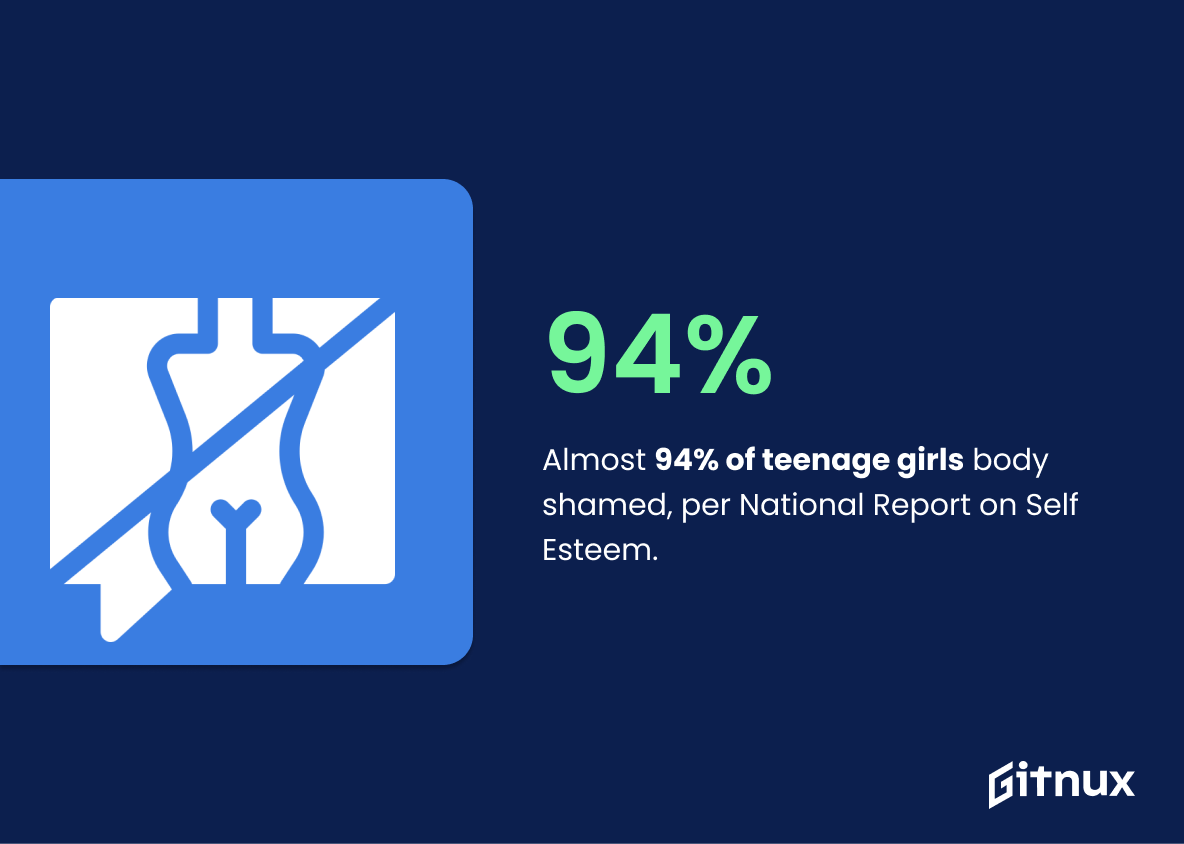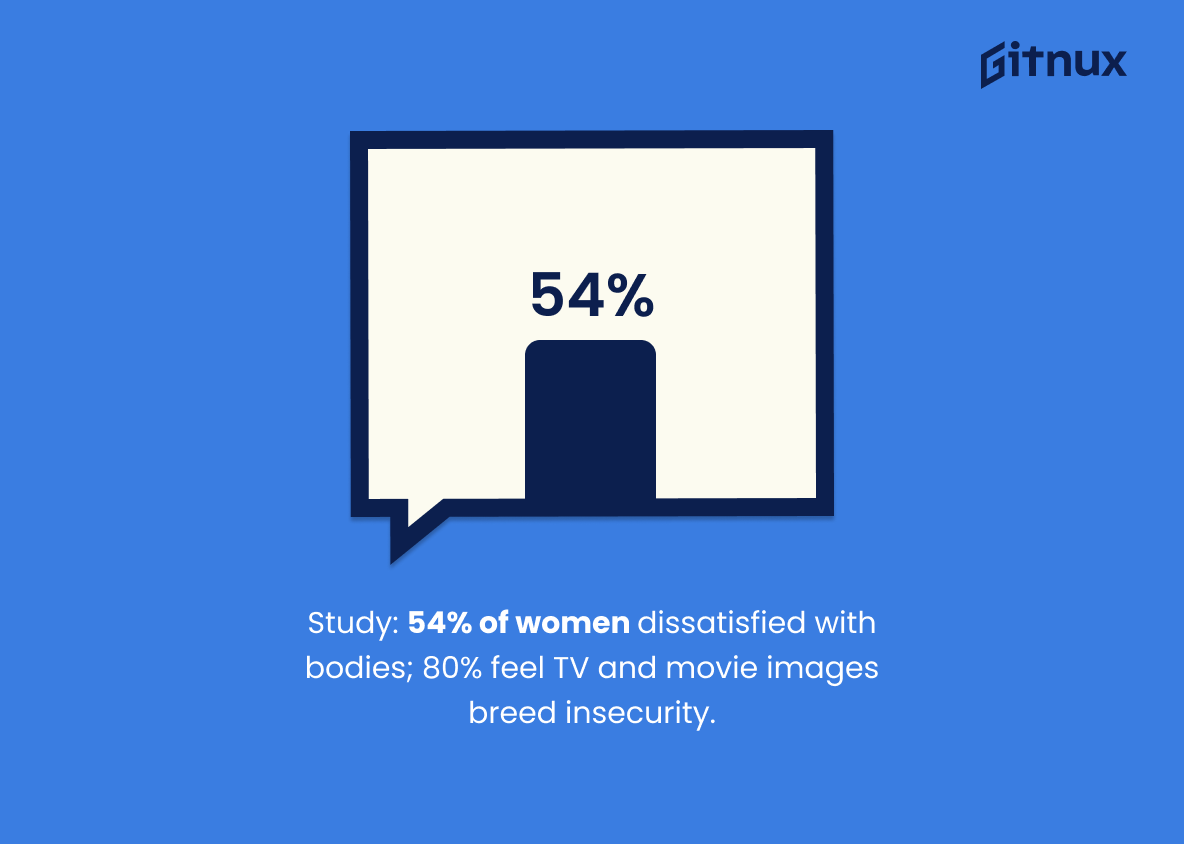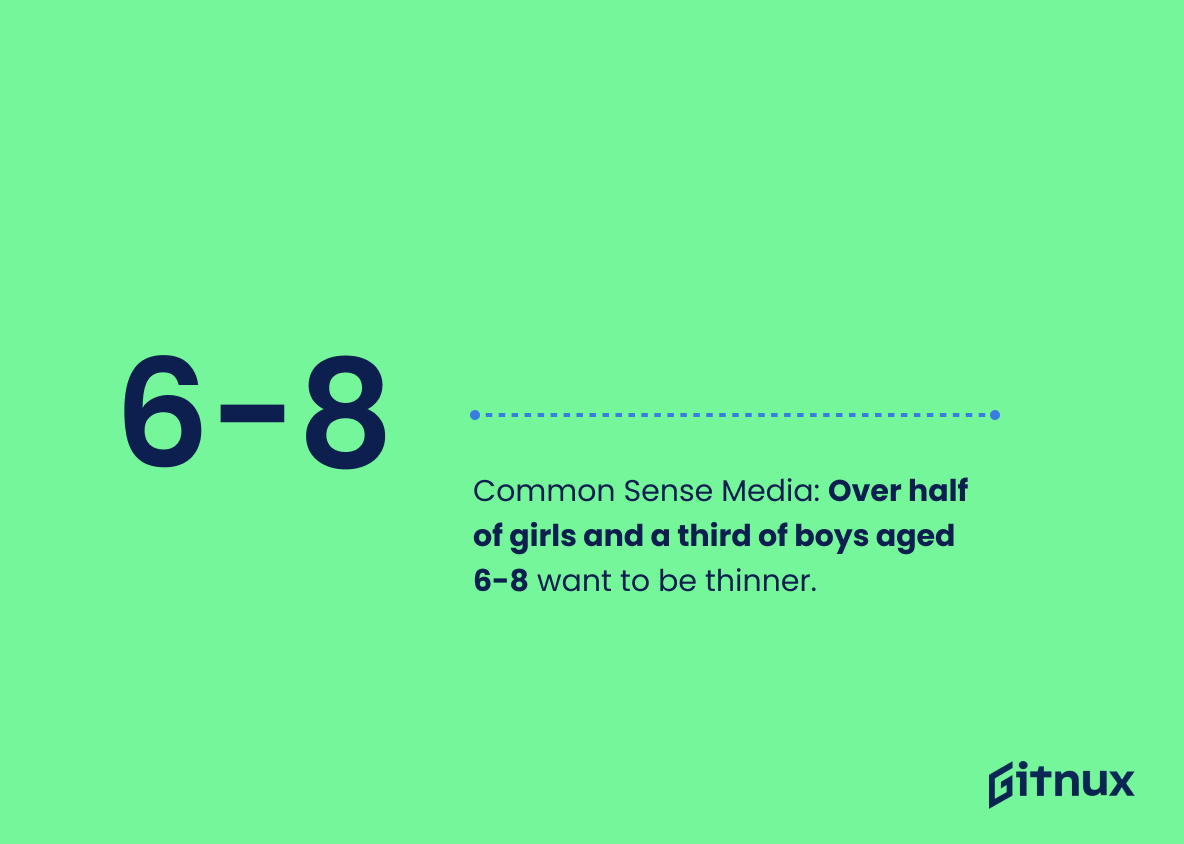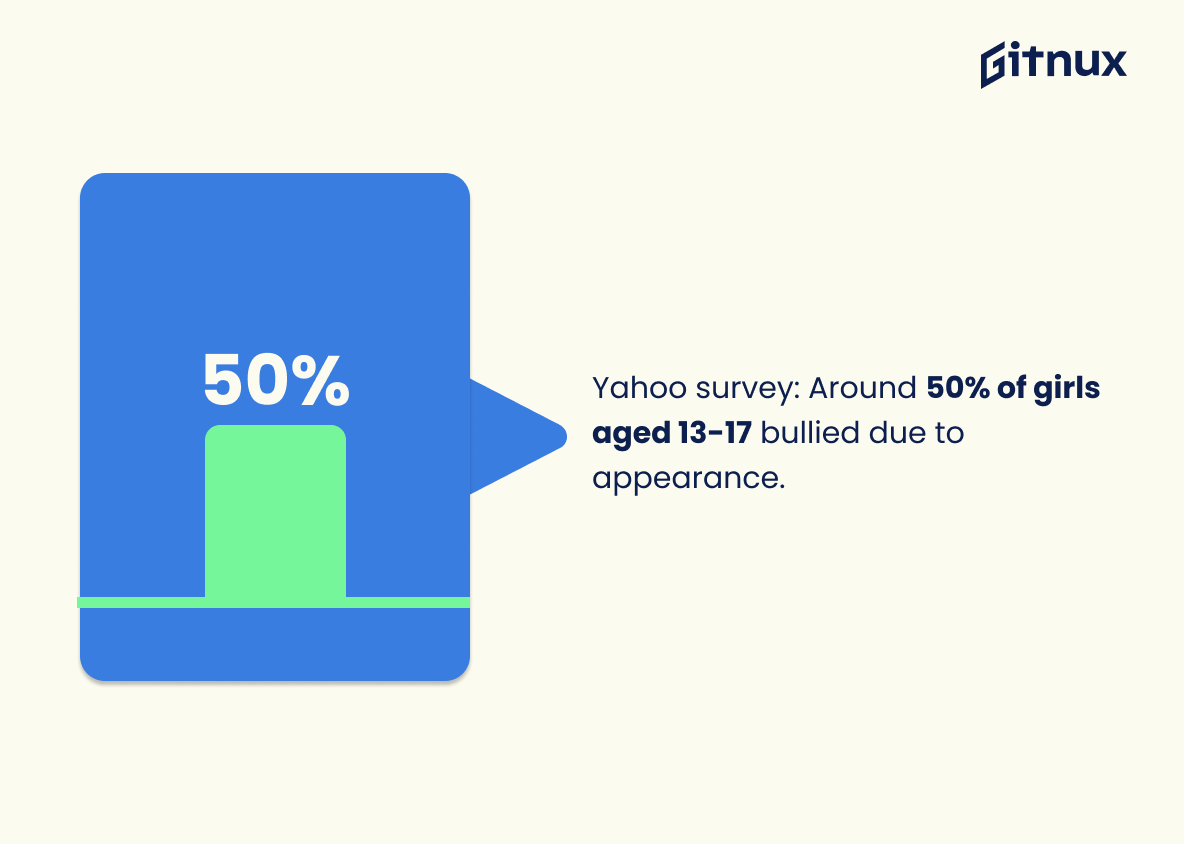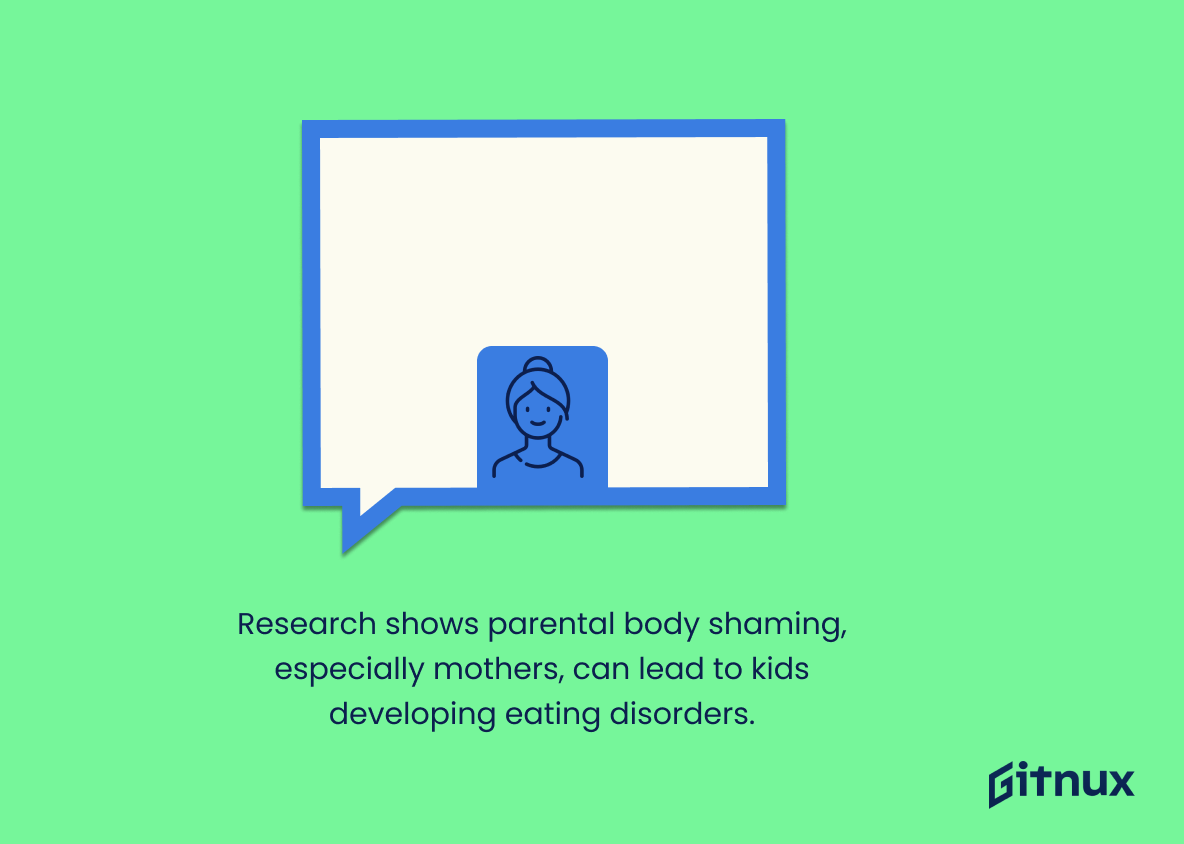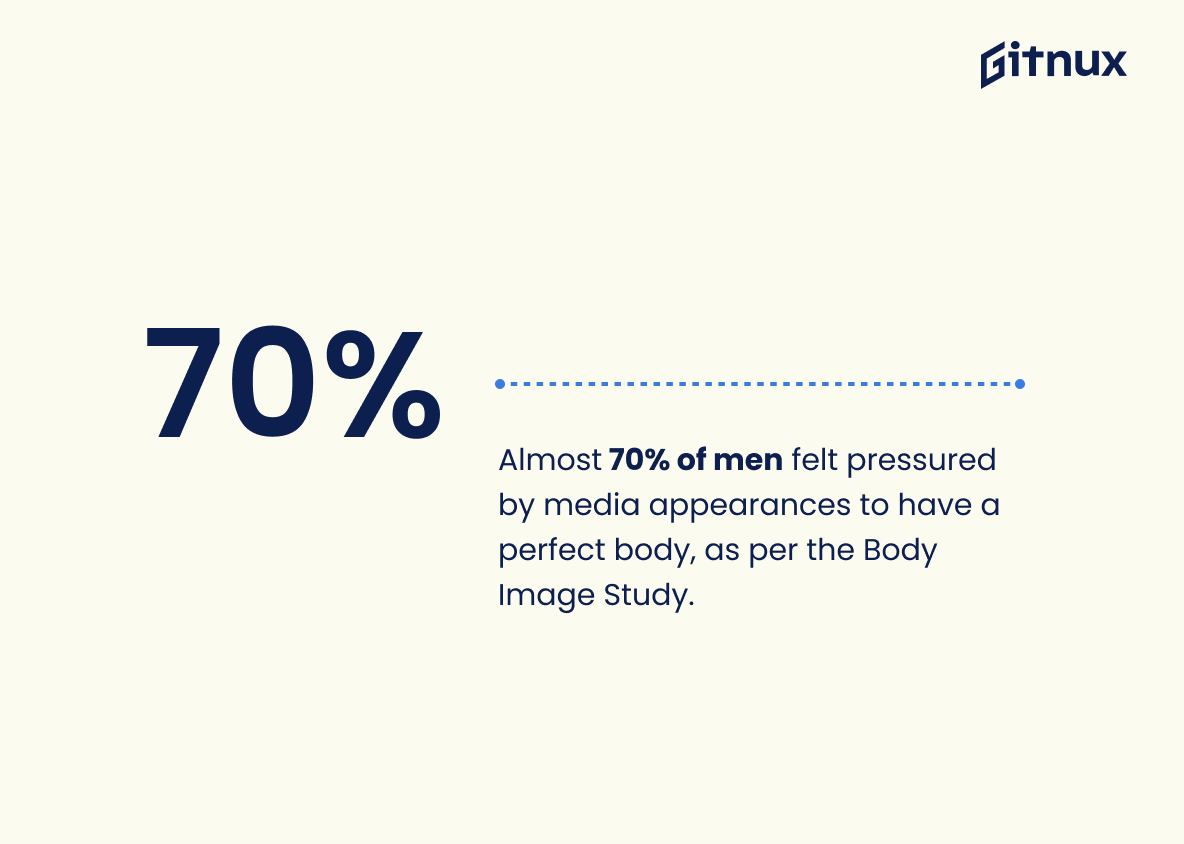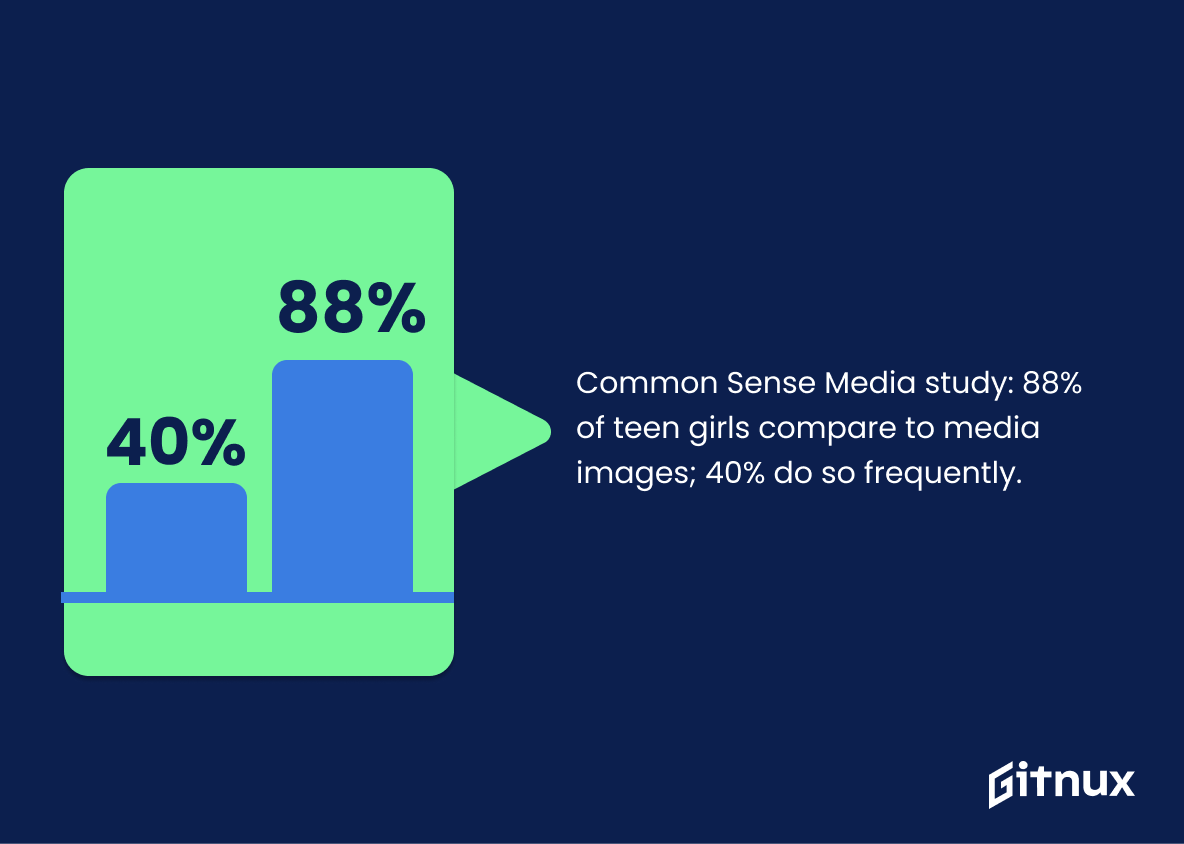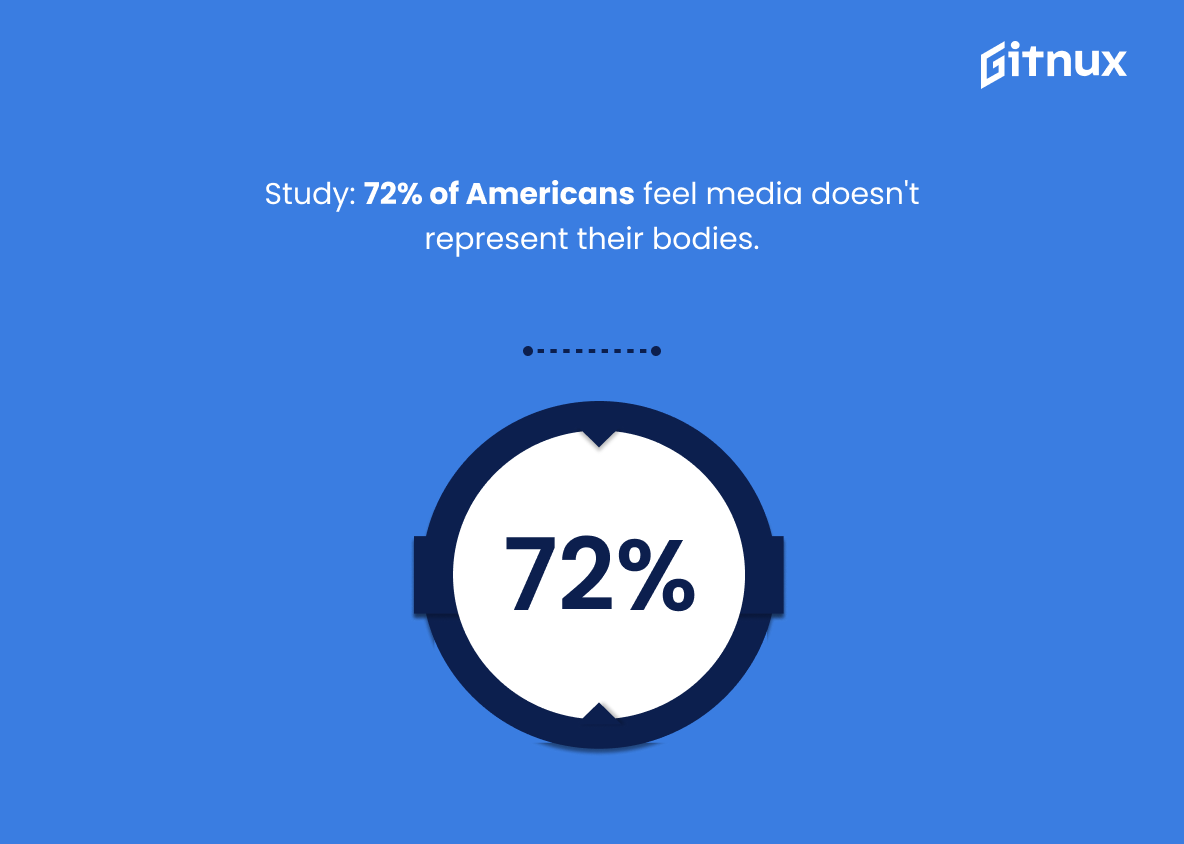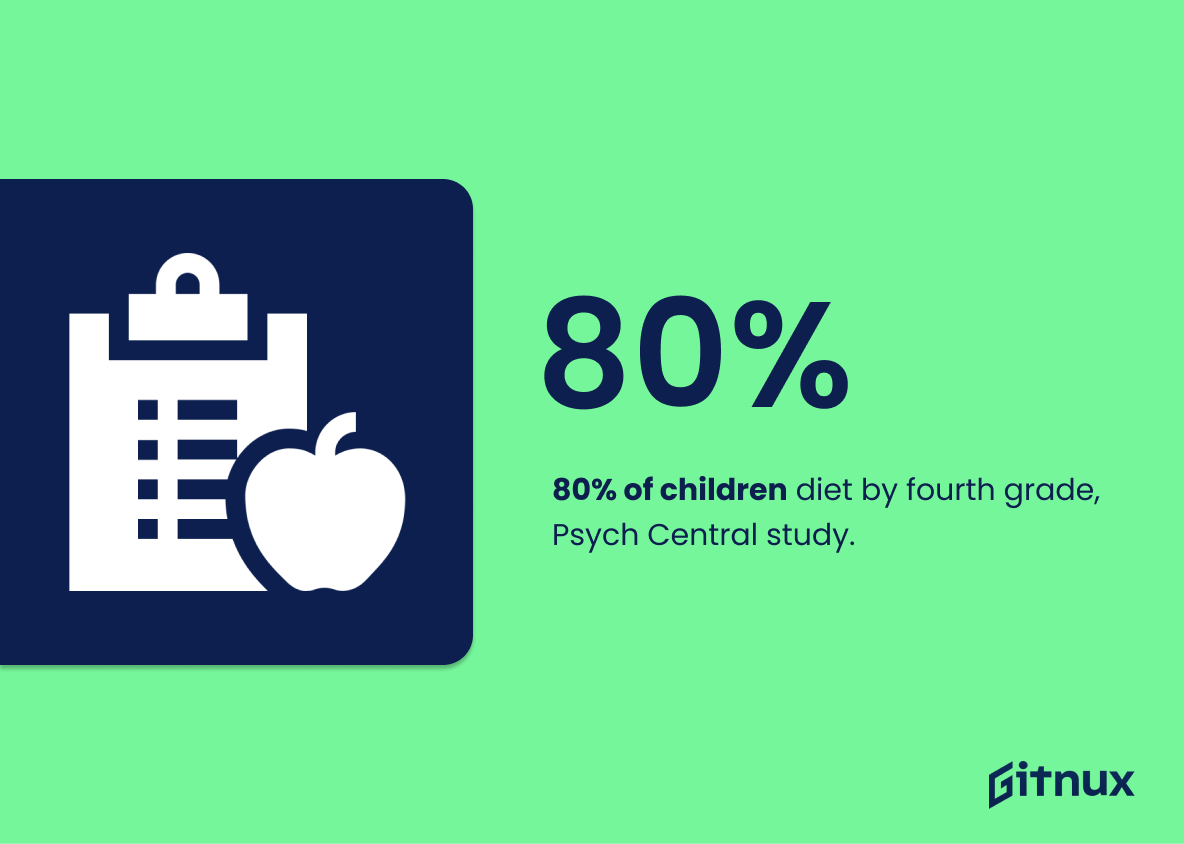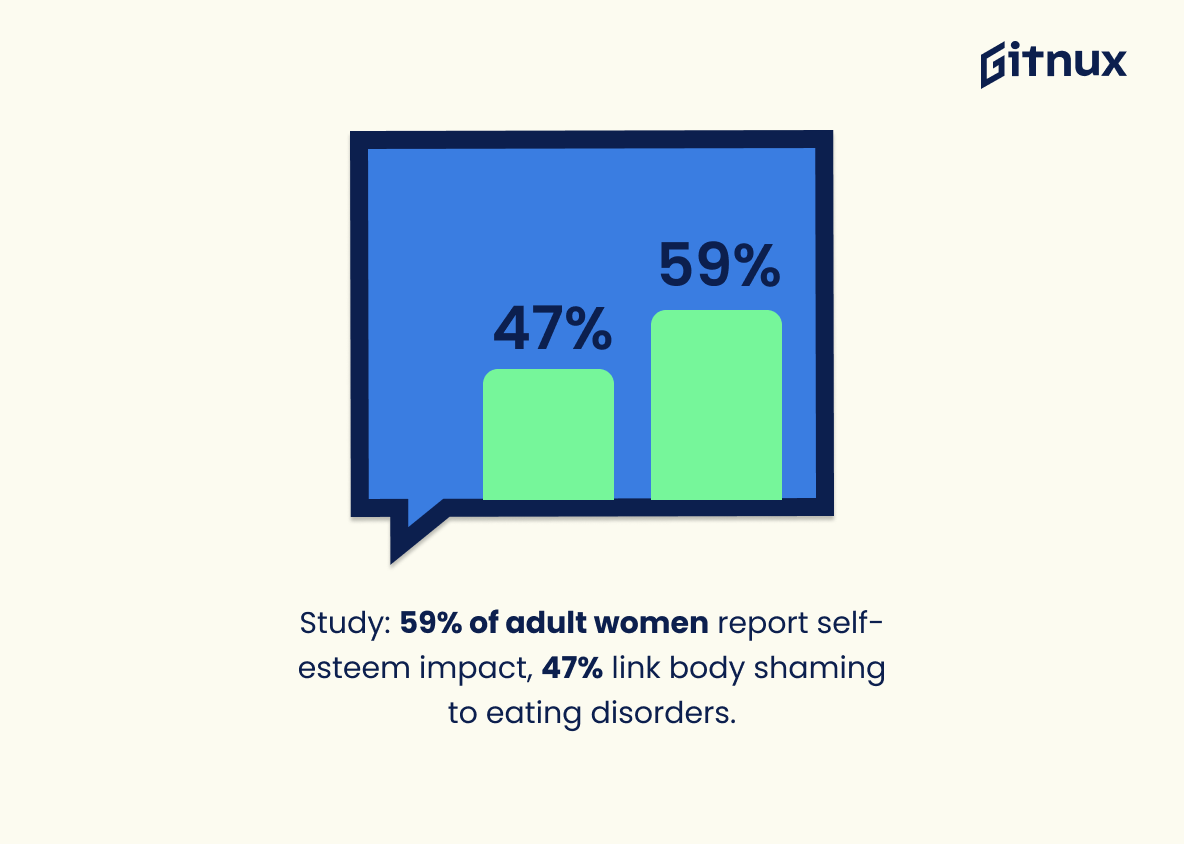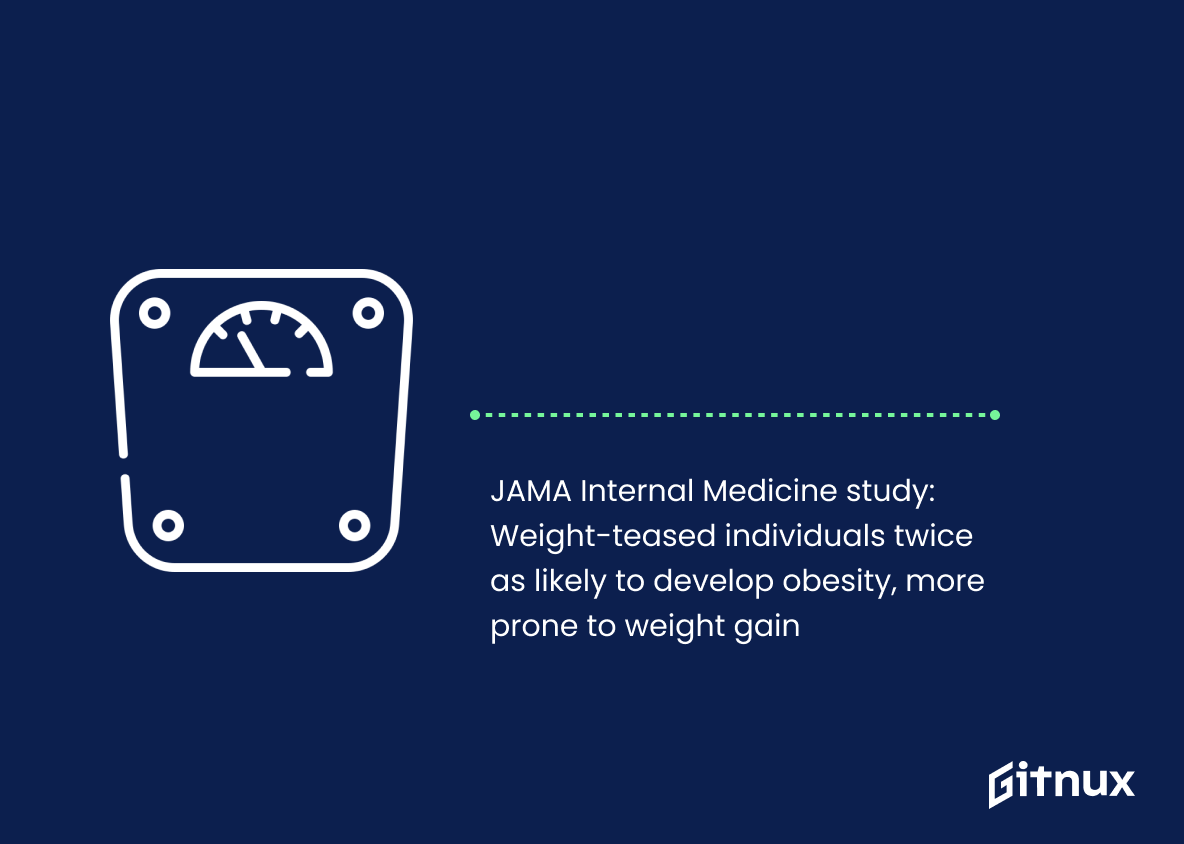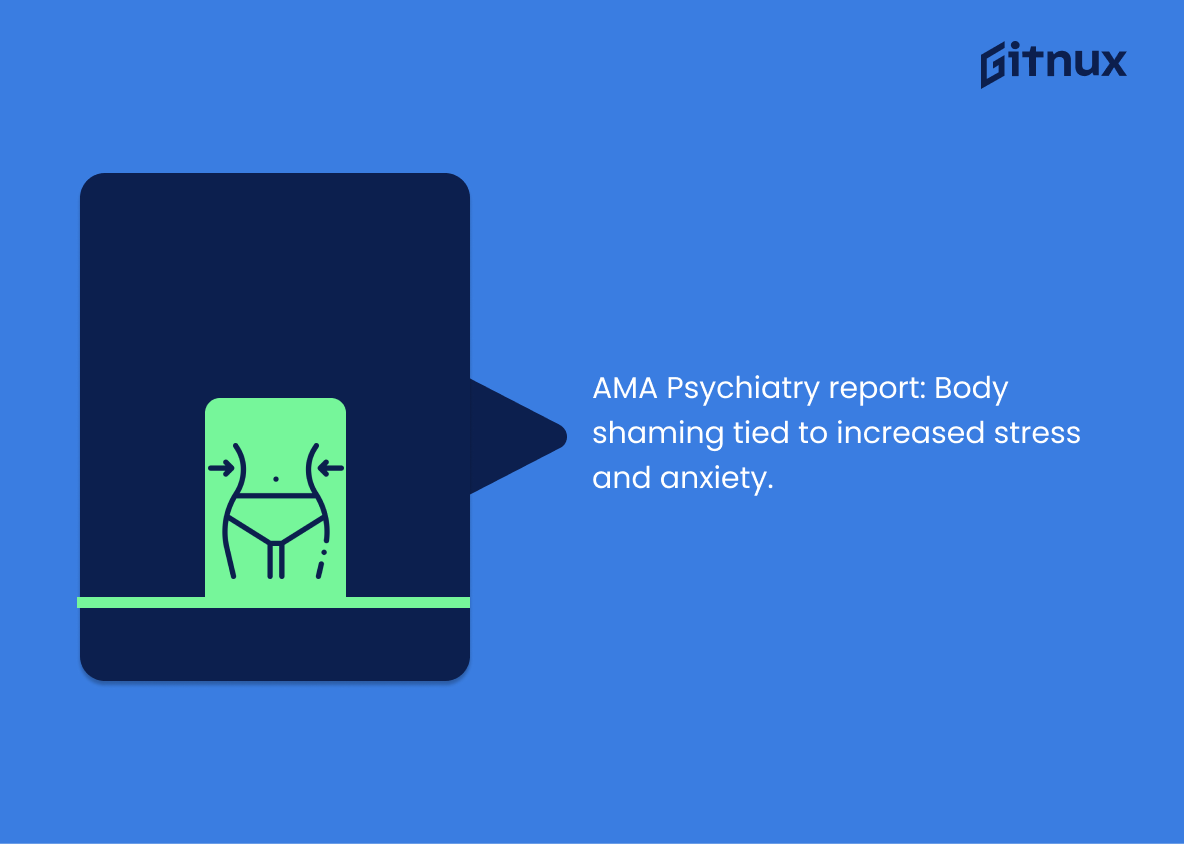In a world dominated by social media and unrealistic beauty standards, body shaming has become a destructive epidemic. An alarming number of individuals fall prey to this hurtful conduct, resulting in devastating psychological impacts. This blog post dives deep into the harrowing world of body shaming, presenting you with compelling statistics that hope to shed light on the gravity of this societal issue. The numbers are stark, alarming, and demand immediate attention. However, by familiarizing ourselves with these facts, we can take proactive steps towards disrupting this hurtful narrative, promoting body positivity, and encouraging self-acceptance among people of all shapes and sizes.
The Latest Body Shaming Statistics Unveiled
Nearly 94% of teenage girls have been body shamed, according to a survey by the National Report on Self Esteem.
Diving deep into the world of body shaming statistics, one cannot overlook the staggering revelation from the National Report on Self Esteem that outlines nearly 94% of teenage girls have experienced body shaming. This critical data point serves as a thunderous awakening, the splash of cold water that opens eyes to the harrowing extent of the body shaming epidemic among the teenage population. It forms a pivotal piece of foundation for a blog post, painting a vivid picture of not just a few isolated incidents, but a widespread societal problem. This statistic not only underpins the urgency and gravity of the issue but also provokes thinking and sparks conversation about the destructive culture of body shaming. Understanding this percentage is akin to holding a lit torch in the shadows, unveiling the severity and prevalence of body shaming that masks the adolescent galaxy, emphasizing the imperative need to address, combat, and ultimately eradicate this harmful issue.
A study found that 54% of women are unhappy with their bodies, and 80% say that they feel the images of women on television and in movies make them feel insecure.
Unveiling these numbers penetrates deeply into the psyche of the modern woman and reveals the pervasive impact of media on self-perception and body image. They illuminate the societal pressure and the silent whispers of perfection broadcasted through television and movies influencing 80% of women. Additionally, the tug-of-war between reality and these impossibly idealized images has led to a disheartening conclusion – over half, a significant 54%, of women confess discontentment with their own bodies. Such figures reinforce the urgency and the need for a conscientious discussion on body shaming, providing substantiated, quantified proof that this is not just an anecdotal issue, but a widespread reality affecting majority of women.
According to Common Sense Media, more than half of girls and one-third of boys as young as 6 to 8 feel their ideal weight is thinner than their current size.
Underscoring the alarming influence of body shaming, this startling statistic from Common Sense Media serves as a compelling centerpiece for a discussion on body shaming. It highlights to the readers just how deeply the pressure to conform to unrealistic beauty standards is embedded in our society, beginning to influence perceptions about body image at a surprisingly young age. It underscores the urgency of dismantling unhealthy beauty standards and combating body shaming attitudes by reflecting on the distorted body image concepts among girls and boys as young as 6 to 8 years. This, evidently, illustrates that body shaming is not just an issue that affects teenagers and adults, but children too, making it a societal concern requiring immediate attention and action.
About 50% of girls in a survey aged between 13 and 17 said they were ridiculed or bullied because of their looks, according to a survey by Yahoo.
This profound statistic provides a vivid picture of just how pervasive the issue of body shaming is among teenage girls, a focal demographic in our discussion. Anchoring the narrative in indisputable quantitative data presents a compelling entry point to the heart-rending reality that a significant proportion of girls within the critical developmental age bracket of 13 to 17 have experienced ridicule or bullying tied to their appearance. This hard-hitting revelation further arms us with the knowledge needed to illuminate the breadth and depth of body shaming’s prevalence, thereby serving indispensably in our collective struggle against this societal ill.
In a 2019 study, researchers found that body shaming leads to higher risks of depression and increased body dissatisfaction among adolescents.
Elucidating on the profound implications of this particular 2019 study broadens our understanding of the psychological ramifications of body shaming. The undeniable linkage to heightened risks of depression and amplified body dissatisfaction among adolescents underlines a grim reality. In the panorama of body shaming statistics, it stands as a stark illustration of how societal pressures relating to body image can foster not just discontent, but nourish mental health disorders like depression. For any blog investigating body shaming, this research proves invaluable, emphasizing the urgency to address body shaming’s deep-rooted psychological impacts on the younger generation.
According to studies, weight-based bullying is the most common form of bullying that youths face.
Plunging into the world of body shaming, one statistic dares to stand bold and unchallenged. Showcasing the ghastly truth behind body shaming, it reveals that weight-based bullying tops the chart, claiming the unfortunate title of being the most common form of bullying faced by youths. Undeniably, this dark reality serves as a glaring mirror reflecting the societal pressure on individuals to fit into predefined beauty standards. Besides underscoring the extent of this harsh issue, it whispers a loud warning to us all: it’s time to rewrite narratives and redefine norms, bringing an end to this unequal and prejudiced fight against body weight. It paints a clearer picture, and a more compelling case, for embracing body diversity. This is the link in the chain we need to sever, the perspective that needs a paradigm shift. Surely we owe the youth – and ourselves — a better, more empathetic world.
Parents who body shame their kids can cause them to have eating disorders, with mothers having a more significant impact than fathers, says research.
The statistic underlines an alarming truth, throwing light on the substantial role that parental behavior, particularly body shaming from mothers, plays in triggering eating disorders in children. This statistic acts as a pivotal piece in unraveling the intricate web of body shaming and its repercussions. It provides invaluable perspective for readers, enabling them to understand the severity of body shaming by showcasing the emotional and psychological fallout on children, often manifesting as eating disorders. This insight, therefore, elevates a blog post about body shaming statistics from just a compilation of data to a powerful tool for inspiring change and fostering more positive attitudes towards body image.
Almost 70% of men felt pressured by media appearances to have a perfect body, as per the Body Image Study.
Highlighting the statistic in the context of a blog post on Body Shaming Statistics offers intriguing insights on the pervasive influence of media on men’s perceptions about their bodies. It contrarily upends the stereotypical notion that body shaming and media pressure are issues affecting women alone. It underscores the pressing universality of the body shaming phenomenon, pushing readers to acknowledge male body image struggles and sparking an inclusive conversation around the topic. Notably, by unmasking the silent battle that around 70% of men face, it reinforces the need for a societal shift towards appreciating body diversity and promoting healthier body image discussions.
88% of teen girls compare themselves to images they observe in the media, and over 40% do so most of the time or always, according to a study from Common Sense Media.
An overview of the pervasive influence of media on self-image is captured by one eye-opening statistic: a staggering 88% of adolescent girls draw comparisons between themselves and the images they see in the media. In fact, for more than 40% of these girls, such comparisons aren’t just a one-off incident, they become as frequent as ‘most of the time’ or even ‘always’, as per a study by Common Sense Media. These figures present a crucial insight for a discussion on body shaming, painting a vivid picture of how influential and potentially damaging media portrayals can be. The outlined data stands as a crucial bedrock of understanding recurrent body shaming issues, thus emphasizing the need for change. Their significance extends to showing that media images not only reflect societal beauty standards but indeed play a substantial role in shaping adolescent girls’ perceptions of their bodies, setting possibly unattainable standards and fuelling the culture of body shaming.
72% of Americans, according to a study, believe that their body is not represented in what they see in the media.
Unraveling this intriguing piece of data gives us a profound insight into the reality of body representation in media. With a staggering 72% of Americans feeling a disconnect between their own bodies and the versions they see in the media, we delve into the heart of issues around body shaming. This statistic underscores the vast majority who feel their bodies fall outside of what’s deemed as “ideal” or “normal” by media standards, creating fertile ground for seeds of doubt and self-criticism to sprout. The data is a chilling testament to how body shaming has burrowed its way into our collective consciousness, highlighting the gravity of the situation and reminding us of our pressing responsibility to prioritize body positivity and inclusivity in all media portrayals.
80% of all children have been on a diet by the time they’ve reached fourth grade, according to a study in Psych Central.
Delving into the realm of body shaming starts at a tender age, unbelievably, as early as fourth grade. A revelation uncovered in a study by Psych Central suggests that a startling majority of up to 80% of all children have undergone a diet during this early life stage. This monumental statistic intertwines with the narrative of body shaming, underscoring the gravity and widespread impact it has on our youth. The data demonstrates the powerful influence that societal standards can have on impressionable minds, leading even young children to drastic measures like dieting. It lays bare an unsettling truth about body image and deep-seated insecurities in the delicate psyche of a child – a stark entry point for the blog post to dive in deeper into the distressing landscape of body shaming.
59% of adult women in a study said body shaming affected their self-esteem, and 47% said it led to eating disorders.
The statistic sheds a glaring light on the profound impact of body shaming, underscoring how it chips away at the self-esteem of adult women, with a staggering 59% affirming its negative effect. Beyond impairing self-value, body shaming has driven nearly half of these women, precisely 47%, towards the precipice of eating disorders. This illuminates the compelling necessity for implementing supportive and positive messaging about body image. This figures injects urgency and relevance, serving as a potent wakeup call in our collective discourse about the devastating consequences of body shaming.
People who’ve been teased about their weight were twice as likely to have obesity as adults and were more likely to have gained weight over time, according to a study by JAMA Internal Medicine.
Scrutinizing this crucial JAMA Internal Medicine study inherently spotlights the alarming linkage between body shaming and its long-term impacts, specifically obesity. Imposing a magnifying glass on real-world data, it unearths a dark underbelly of societal behavior, revealing that individuals subjected to weight-related mockery not merely hold doubled likelihood of facing obesity as adults, but also generally gain weight progressively.
In the mosaic of a discourse on body-shaming statistics, this revelation forms a deeply impactful centerpiece, empirically affirming the life-altering consequences of body shaming. It strengthens the call to arms against such damaging behavior, emphasizing the urgent need for informed conversations and strategic interventions to curb this societal issue. It’s like a startling wakeup call resonating through each syllable of the blog post underlining the importance of respectful treatment of everyone, no matter their weight.
Body shaming is linked to higher levels of stress and anxiety, according to a report in the journal JAMA Psychiatry.
In the bustling sphere of blogs about body shaming statistics, the connection between body shaming and increased stress and anxiety levels, as noted in a reputable JAMA Psychiatry journal report, unfolds as a paramount focal point. The potency of this statistical insight undeniably underscores the profound psychological aftermath body shaming can induce, thus accentuating the gravity of this rampant societal issue. It propels readers to assess the ramifications that vitriolic commentary about body image has on individuals’ mental health, urging them to rethink their perspectives and take strides towards fostering an atmosphere of acceptance and positivity. This widespread, deep-seated impact breathes life into the importance of discussing, addressing, and ultimately dismantling body shaming in all its forms.
Conclusion
In conclusion, body shaming statistics present a sobering look at an issue that affects millions of people worldwide. This damaging societal phenomenon thrives on biases and stereotypes, inflicting psychological wounds that aren’t always visible. The widespread prevalence of body shaming underscores the urgency to foster greater body positivity and acceptance in our societies. We all have a responsibility to challenge and change the narrative around beauty standards, promoting empathy, acceptance, and respect for all body types. It’s high time we put an end to body shaming and cherish the diversity of human bodies in their full glory. Remember, true beauty radiates from within, and no statistic can measure that. Together, we can be the change that leads to a more accepting and less judgmental world.
References
0. – https://www.psycnet.apa.org
1. – https://www.finance.yahoo.com
2. – https://www.www.bustle.com
3. – https://www.bodyimagemovement.com
4. – https://www.psychcentral.com
5. – https://www.www.commonsensemedia.org
6. – https://www.www.dosomething.org
7. – https://www.www.eurekalert.org
8. – https://www.www.ncbi.nlm.nih.gov
9. – https://www.www.nytimes.com
10. – https://www.jamanetwork.com
